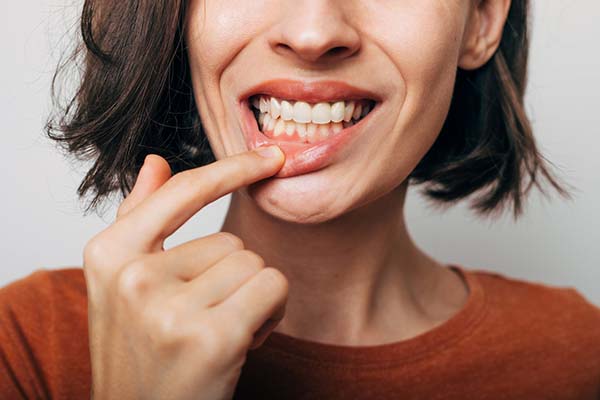



Most people know about cavities, but what about gum disease? Both of these issues can affect your oral health, but people often overlook gum problems. There are varying levels of severity when it comes to this condition. Even minor bouts with it can cause pain and discomfort. If you do not treat it, you could suffer severe health effects. You should know how to identify the symptoms of this disease and what leads to it.
Clues that a person has gum disease
Like tooth decay, gum conditions can start out small. Over time, however, it is usually clear that there are oral health concerns. Diseased gums will usually bleed during brushing. Sometimes, the gums may bleed more frequently. The gums may also become inflamed and be tender to the touch. These are signs that the person has gingivitis, a milder form of the disease.
At more serious stages, periodontitis occurs. Symptoms may include receding gums and infections in the mouth. The infection can spread from there throughout the body. Cardiovascular problems can link to gum disease.
Not enough brushing
Occasional brushing (or never brushing at all) will likely lead to gum disease. Brushing with a soft-bristled brush and fluoride-based toothpaste removes food particles from the teeth and at the gumline. Doing this will prevent bacteria from building up and causing plaque and tartar. Brushing should occur at least twice a day. Inattention to these details will increase the individual’s chances of developing gingivitis and subsequently periodontitis.
Poor flossing habits
Flossing is just as important in the fight against gum disease. Flossing can dislodge particles of food from places that brushing may miss, such as in between hard-to-reach teeth. People of all ages should floss daily, preferably after eating or at the end of the day. Ignoring this habit will cause gums to swell and become tender. Bacteria will form and start to pull the gums away from the teeth.
Avoiding the dentist
Going to the dentist’s office may not be the most exciting thing, but it is vital. A semiannual dental checkup allows the dentist to clean the patient’s teeth and examine the individual for emerging problems. A patient may not recognize gum disease, but a dentist can spot this concern and start a treatment plan. People who rarely, if ever, go to the dentist may never get the professional care they need to combat this issue. Someone with gum problems may need to visit the dentist more often, as much as every two months.
Do your part to stay healthy
You do not want to contend with the effects of gum disease. The consequences could be severe for your oral health and oral wellness. Poor oral hygiene is a major culprit of this condition. If you stay on top of brushing and flossing, and if you visit the dentist, you can maintain healthy gums. Talk to your dentist today if you have concerns about how your gums look and feel.
Request an appointment here: https://www.thesimplesmiles.com or call Simple Smiles at (423) 888-0204 for an appointment in our Johnson City office.
Check out what others are saying about our dental services on Yelp: Gum Disease in Johnson City, TN.
Recent Posts
Periodontal gum disease treatment helps prevent the progression of gum disease, which protects your oral and overall health. Periodontal disease, commonly referred to as gum disease, affects the tissues supporting the teeth, potentially leading to tooth loss if left untreated. A peridontist's early diagnosis and treatment of this condition can significantly improve your long-term gum…
Flossing is an important component of preventive dentistry. Flossing must always accompany daily brushing. This may seem insignificant. After all, it involves running a line of floss through the thin gaps of your teeth. Even so, flossing benefits your teeth. If you want to know how valuable flossing is for preventive dentistry, here are the…
Preventative dental care is important for all patients, but those who live with a chronic health condition should consider regular dental visits even more often. Although many have heard this before, it is helpful to understand exactly why this is the case and what might take place during a visit for preventive dental care.Oral health…
Dental fillings are not enjoyable procedures, however, they are often necessary to restore teeth that are in bad shape. Thankfully, there are a few ways that patients can avoid having to get a dental filling altogether. Want to learn how to avoid getting a dental filling? This article outlines some important information that can be useful when…


